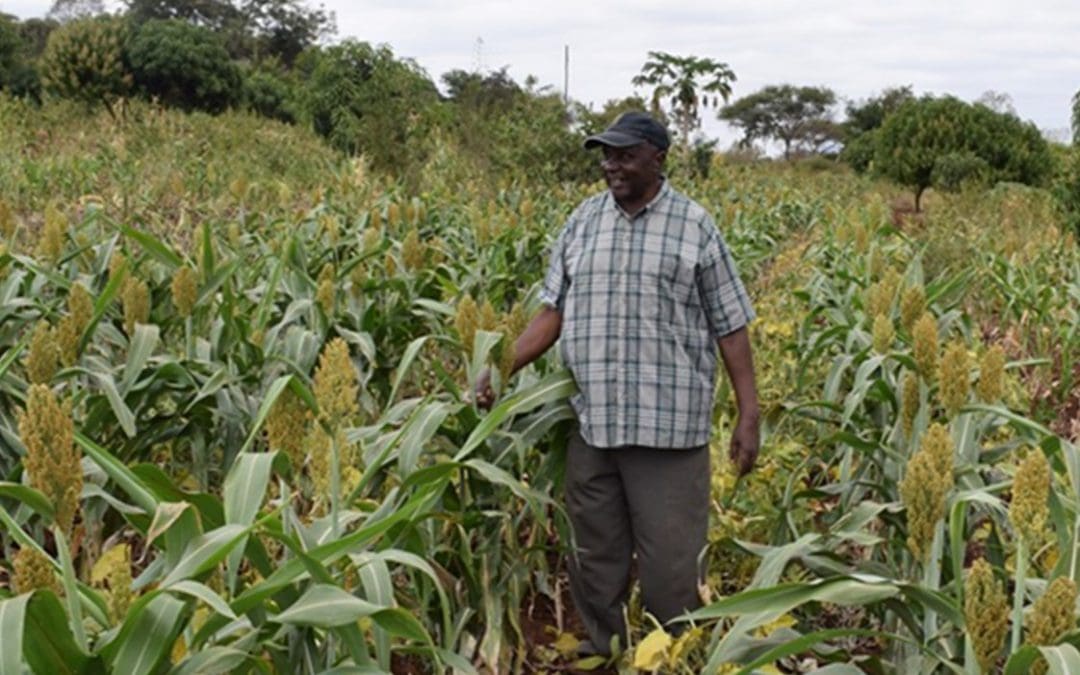New drought-tolerant varieties rekindle hopes of food security in drought-prone Makueni County
- From
-
Published on
27.09.21

Hoping against hope of decent harvests, farmers in the semi-arid and arid regions of eastern Kenya have always planted their traditional and favourite food crops – pigeonpea, green gram, sorghum, pearl millet, finger millet, cowpea, and maize – at the onset of long or short rains. But it is a ritual that has been driven by impulse. For year in year out, the farmers have suffered major crop losses due to the prevailing harsh environments – high temperatures, low and erratic rainfall, and unrelenting prolonged droughts compounded by pests and diseases. The consequences have been grave: food and nutrition insecurity leading to hunger and starvation, only minimally ameliorated with sporadic distribution of relief food.
But this despair is steadily turning into hope for farmers in Makueni County. In 2019, the United States Agency for International Development/Feed the Future funded Accelerated Value Chain Development Program (AVCD), through the International Crops Research Institute for the Semi-Arid Tropics (ICRISAT) and Egerton University Seed Unit introduced drought tolerant and high yielding varieties of pigeonpea (Egerton Mbaazi 1, Egerton Mbaazi 3 and Egerton Mbaazi 4), sorghum (EUS1 and Gadam) and green grams (Karembo and Biashara). These varieties have proved a fundamental fact: while the harsh environment is a major factor in crop failure, unavailability of improved varieties that can withstand or escape drought, that are disease-resistant and their respective certified seed have been the main and even bigger problems to agricultural productivity in the arid and semi-arid lands (ASALs).
